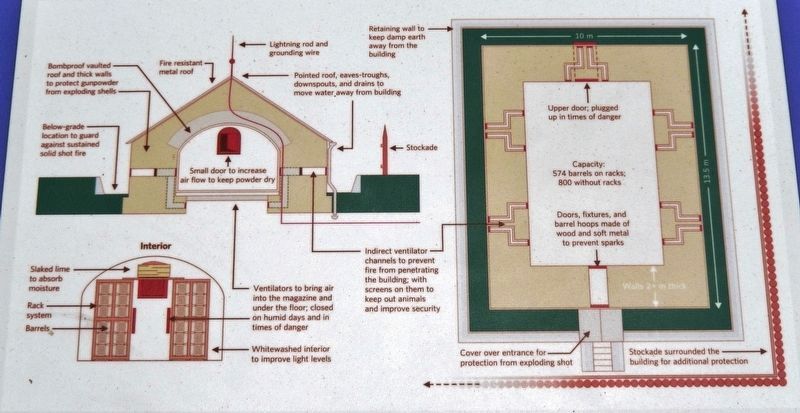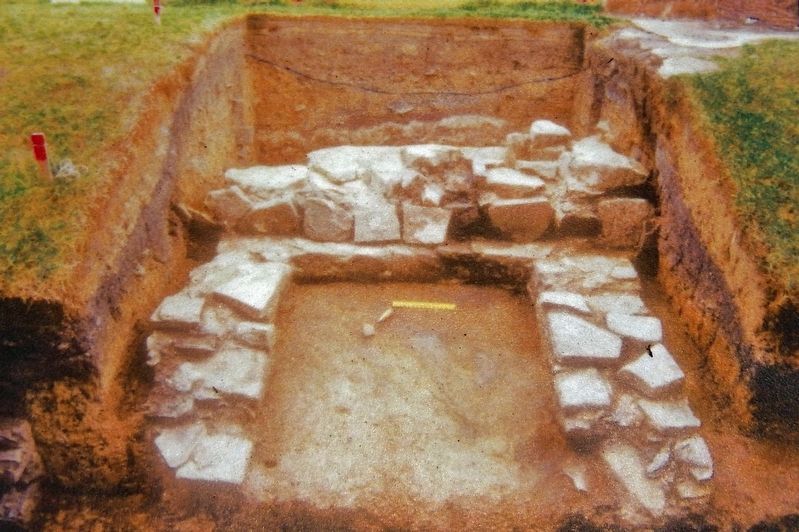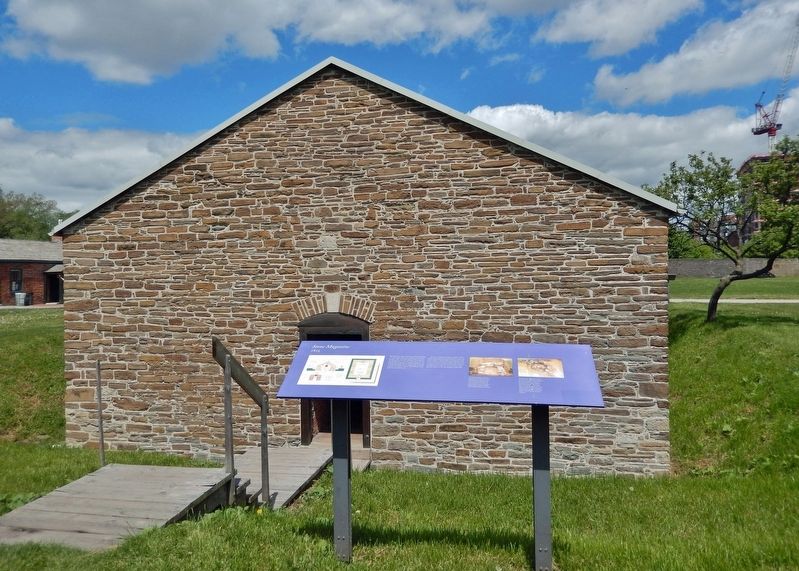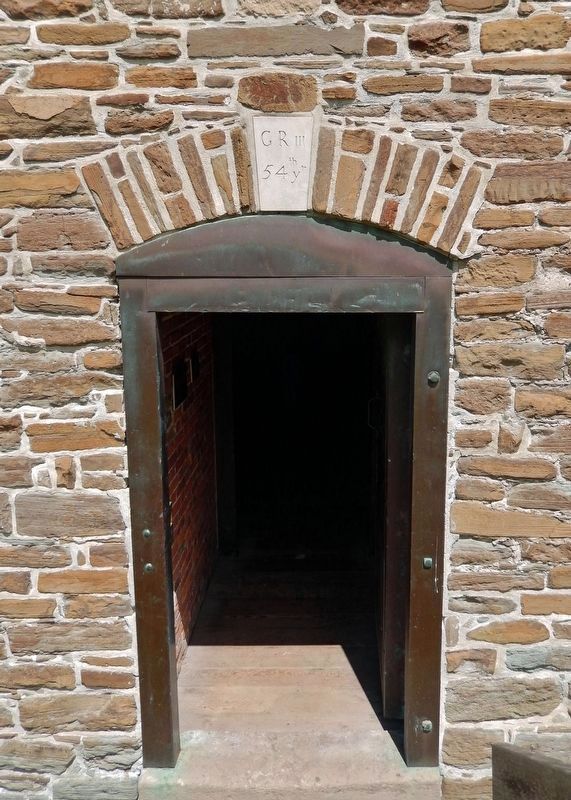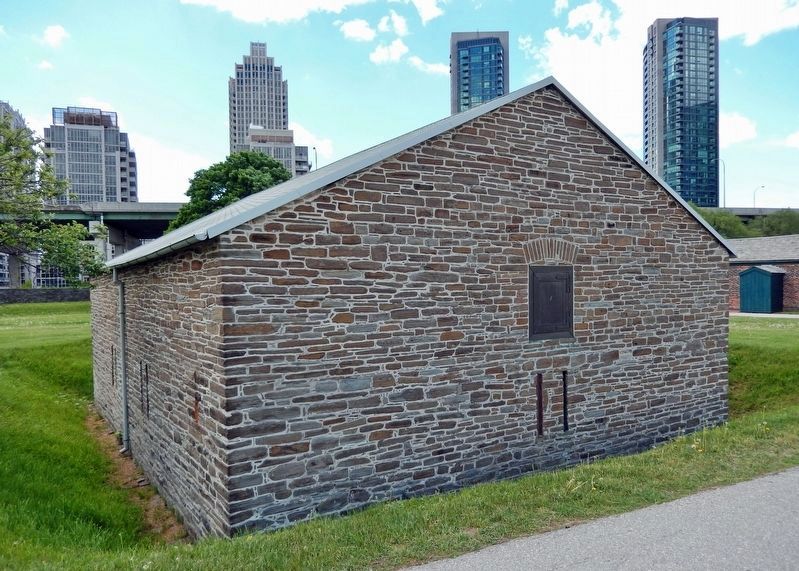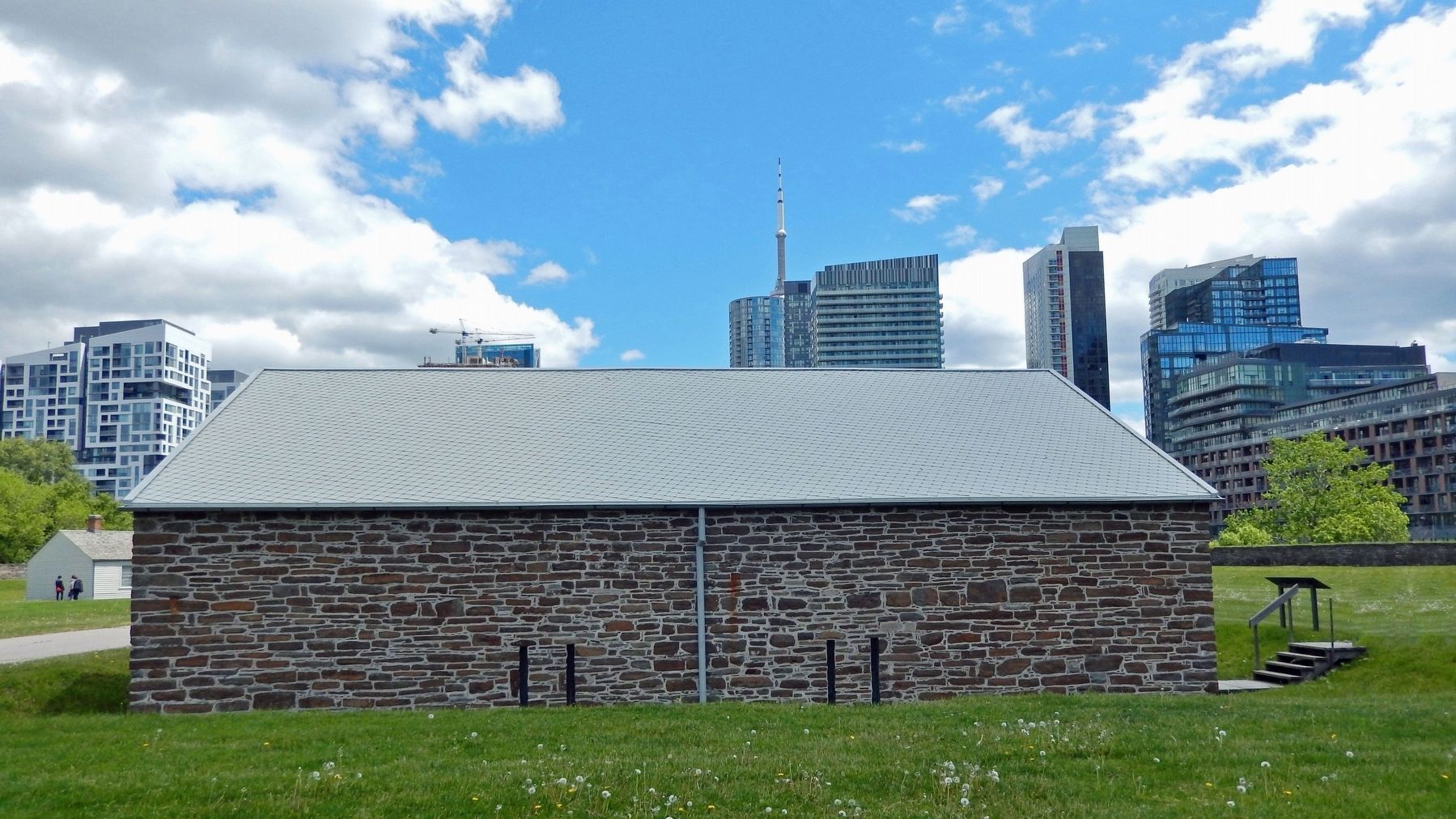Fort York in Toronto, Ontario — Central Canada (North America)
Stone Magazine
1815
You are standing at the fort's original surface grade. Filling raised the soil level in the 19th and 20th centuries. Nevertheless, the magazine still sat at a lower level than the original grade in 1815 to remove it from the line of enemy fire. This was possible because the fort was located on high ground relative to the surrounding topography.
Topics. This historical marker is listed in these topic lists: Architecture • Forts and Castles. A significant historical year for this entry is 1815.
Location. 43° 38.321′ N, 79° 24.223′ W. Marker is in Toronto, Ontario. It is in Fort York. Marker can be reached from Fort York Boulevard, 0.2 kilometers north of Lake Shore Boulevard West. The marker is located along the interpretive walkway at Fort York National Historic Site. Touch for map. Marker is at or near this postal address: 250 Fort York Boulevard, Toronto ON M5V 3K9, Canada. Touch for directions.
Other nearby markers. At least 8 other markers are within walking distance of this marker. Well and Well House (a few steps from this marker); Government House (a few steps from this marker); North and South Soldiers' Barracks (within shouting distance of this marker); Fort York / Le Fort York (within shouting distance of this marker); Circular, or Government House, Battery (within shouting distance of this marker); Officers' Blue Barracks (within shouting distance of this marker); Officers' Brick Barracks and Mess Establishment (within shouting distance of this marker); No. 2 (Centre) Blockhouse (about 90 meters away, measured in a direct line). Touch for a list and map of all markers in Toronto.
Related markers. Click here for a list of markers that are related to this marker. Fort York National Historic Site
Also see . . . Fort York National Historic Site. Excerpt:
The Fort York National Historic Site was built in 1793 and is the birthplace of urban Toronto. The Fort served as the city’s primary harbour defence between the 1790s and the 1880s and was the home of a military garrison until the 1930s. Fort York is where British soldiers, First Nations warriors and Upper Canadian militiamen stood together against the United States and its mission to capture Toronto in the War of 1812. The bloody Battle of York that ensued was a dark and dramatic moment in the history of the city.(Submitted on December 10, 2023, by Cosmos Mariner of Cape Canaveral, Florida.)
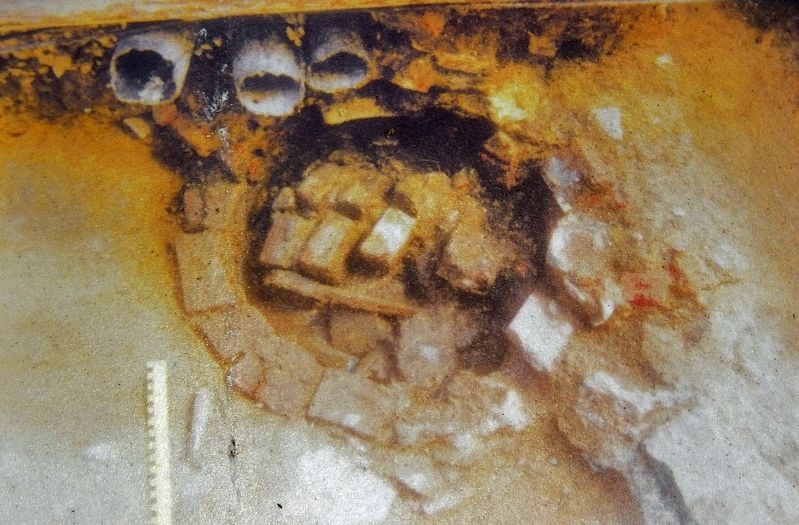
4. Marker detail: Stone Magazine Water Tank
Archaeologists uncovered a water tank just to the right of the magazine door in the 1990s. It served as a terminal point for the building’s lightning rod system from some time in the 1820s-30s until the 1850s or later, after which the Army modernized its protection system. (Modern photograph by Catherine Webb, City of Toronto Museum Services.)
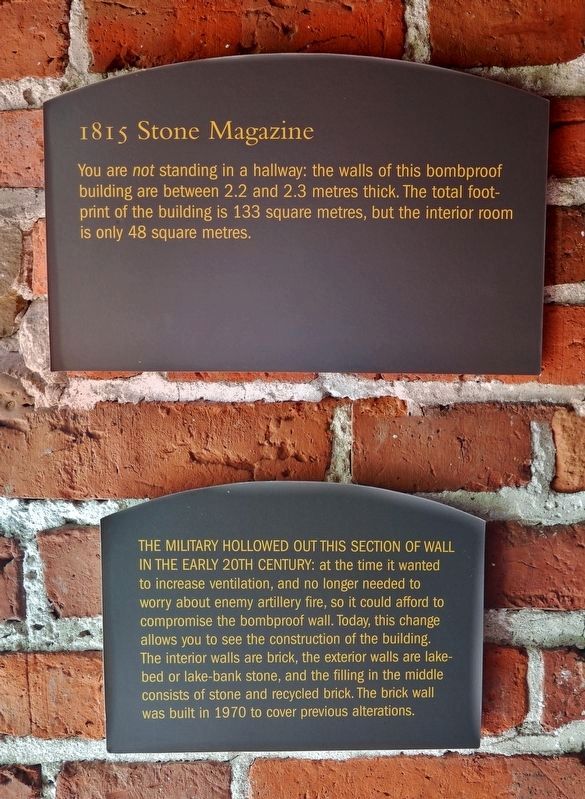
Photographed By Cosmos Mariner, May 28, 2022
7. Stone Magazine — Interior Interpretive Markers
You are not standing in a hallway: the walls of this bombproof building are between 2.2 and 2.3 metres thick. The total footprint of the building is 133 square metres, but the interior room is only 48 square metres.
The Military Hollowed out this section of wall in the early 20th century: at the time it wanted to increase ventilation, and no longer needed to worry about enemy artillery fire, so it could afford to compromise the bombproof wall. Today, this change allows you to see the construction of the building. The interior walls are brick, the exterior walls are lakebed or lake-bank stone, and the filling in the middle consists of stone and recycled brick. The brick wall was built in 1970 to cover previous alterations.
Credits. This page was last revised on December 10, 2023. It was originally submitted on December 10, 2023, by Cosmos Mariner of Cape Canaveral, Florida. This page has been viewed 51 times since then and 10 times this year. Photos: 1, 2, 3, 4, 5, 6, 7, 8, 9. submitted on December 10, 2023, by Cosmos Mariner of Cape Canaveral, Florida.

